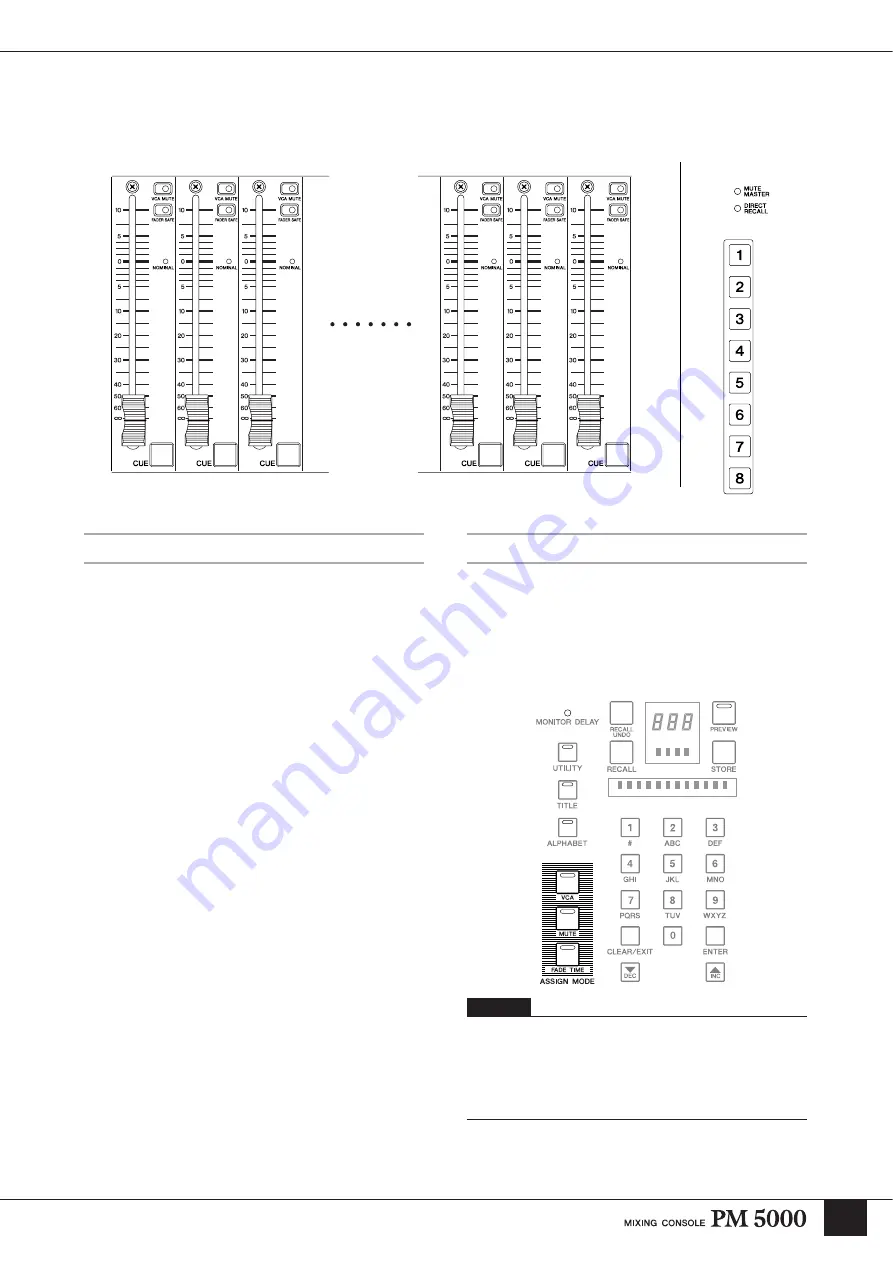
21
Input Channel Section
Channel Grouping
This section will describe how channels can be assigned to VCA and mute groups.
VCA Grouping
The PM5000 provides two methods of “grouping” input
channels so that they can be controlled via a single
master fader while maintaining the level relationship
between the individual channels in the group. The
traditional method is to send the channel signals to any
of the console’s 12 stereo aux or 8 mono group/aux
buses and use the bus master fader for group control.
The second method, pioneered by Yamaha’s introduction
of VCA-controlled groups in the PM3000 console, is to
directly control the levels and muting of the channels
assigned to a group via voltage control. The main
advantage of this system is that a number of different
group configurations – for different scenes in a show, for
example – can be set up beforehand and then recalled
instantaneously as needed. This type of speed and
flexibility is simply not possible using the traditional
group bus assignment method.
Assigning VCA and Mute Groups
Each input channel can be freely assigned to any of 12
VCA groups and 8 mute groups for group level control
via the VCA master faders or group muting via the mute
master switches. VCA or mute group assignment is
initiated by using the ASSIGN MODE keys in the
PM5000’s digital control section.
VCA
1
VCA
12
VCA
11
VCA
10
VCA
3
VCA
2
VCA Master Section
Mute Master
Switches
NOTE
The ASSIGN MODE keys include a [FADE TIME] key which
will not be discussed here. Fade time assignment specifies the
amount of time it will take the motor faders to reach the recalled
fader levels when a scene memory is recalled. Refer to the “Scene
Memory Functions” section on page 51 for details concerning the
fade time function.
Содержание PM 5000 Series
Страница 1: ...Owner s Manual E ...
















































